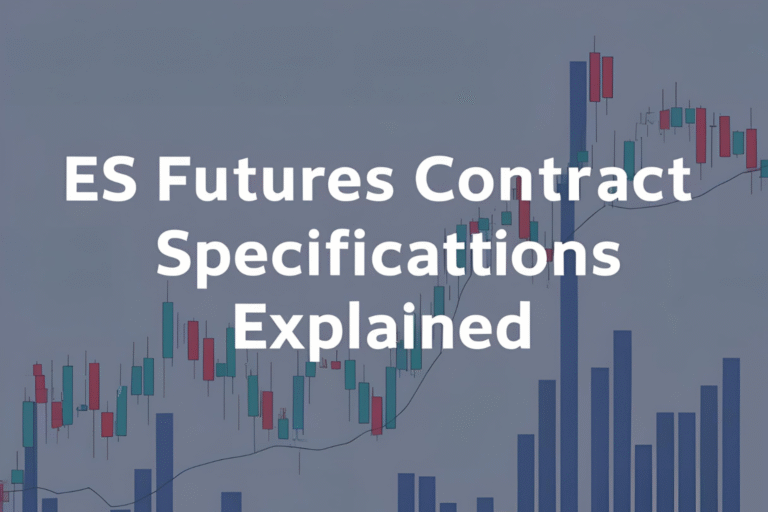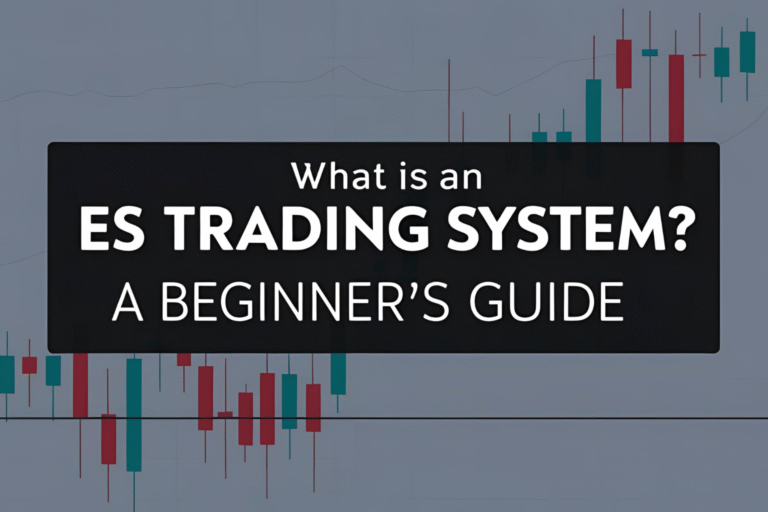ES Futures Live Chart: How to Read and Analyze
The ES futures live chart is one of the most important tools in any trader’s workflow. It provides real-time insights into market behavior, helping traders react to price movements, spot trends, and identify trading opportunities.
This guide explains how to read and analyze the ES chart like a professional, using proven techniques that support smarter trading decisions.
What Is an ES Futures Live Chart?
The ES futures chart displays the price movements of the E-mini S&P 500 futures contract in real time. It’s updated continuously as market orders are executed, providing a visual representation of:
- Price action over time
- Volume traded
- Key price levels
- Technical indicators and patterns
You can view live ES charts on platforms like TradingView, NinjaTrader, ThinkorSwim, and others.
Key Elements of the Chart
Here’s what you’ll typically see:
- Price Axis (Y-Axis): Shows ES price in index points
- Time Axis (X-Axis): Shows trading sessions broken into time intervals
- Candlesticks/Bars: Each represents price movement over a time period (e.g., 1 min, 5 min)
- Volume Bars: Display number of contracts traded per candle
- Indicators: Help assess trend, momentum, volatility, and strength
Timeframes for Different Traders
| Timeframe | Purpose |
|---|---|
| 1-min | Scalping and short-term entries |
| 5-min | Intraday setups and reversals |
| 15-min | Broader intraday view |
| 1-hour | Swing trading setups |
| Daily | Major trend and key support/resistance |
How to Read the Chart
To analyze the ES futures chart:
- Identify the trend: Use price structure (higher highs/lows or lower highs/lows) and moving averages.
- Mark key levels: Prior day’s high/low, VWAP, pivot points, recent breakout zones.
- Spot candlestick signals: Watch for reversal candles like hammers, engulfing bars, or inside bars.
- Monitor volume spikes: Volume confirms breakout strength or potential reversals.
- Watch momentum indicators: Tools like RSI or MACD show overbought/oversold zones and crossovers.
Indicators Commonly Used
- VWAP (Volume Weighted Average Price): Key dynamic support/resistance for intraday traders
- EMA (Exponential Moving Average): Tracks trend direction with responsiveness
- Bollinger Bands: Highlights volatility expansion and contraction
- ATR (Average True Range): Measures volatility — great for adjusting stop-loss distance
- MACD/RSI: Measures trend momentum and potential reversal points
Use 1–2 indicators at a time to avoid clutter and confusion.
Tools for Live ES Charts
Top platforms for accessing ES futures live charts include:
- TradingView: User-friendly with real-time data and alerts (paid plan for live CME quotes)
- ThinkorSwim: Deep charting tools with built-in strategies and paper trading
- NinjaTrader: Customizable and ideal for both manual and automated trading
- Investing.com: Free access with basic charting features
- IBKR TWS: Institutional-level charting and trade execution
Final Tips for Chart Analysis
- Start your analysis with the higher timeframes, then zoom in for entries
- Use alerts to notify you when price reaches key levels
- Apply trendlines and zones rather than exact price levels
- Keep a trading journal to track how chart analysis aligns with outcomes
Final Thoughts
Reading and analyzing the ES futures live chart is not about guessing — it’s about interpreting the data objectively and consistently. Mastering this skill gives you an edge in identifying opportunities, managing risk, and improving your overall strategy.
With practice, a clean chart and disciplined approach can lead to smarter and more confident trading.
FAQs
1. What is the best chart type for ES futures?
Candlestick charts are preferred for their ability to display detailed price action.
2. Do I need to pay for live ES chart data?
Yes, real-time CME data typically requires a subscription, but delayed data is free on many platforms.
3. What is the most important indicator for ES futures?
VWAP is widely used by intraday traders for institutional price tracking and trend bias.
4. Can I trade directly from the ES chart?
Yes, platforms like ThinkorSwim and NinjaTrader allow direct order placement from charts.
5. How do I choose the best timeframe for analysis?
It depends on your strategy — scalpers prefer 1–5 min, swing traders use hourly/daily charts.


